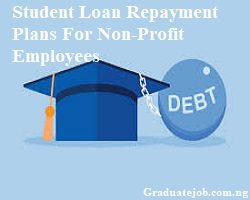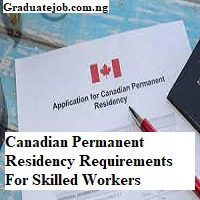Student loan repayment plans for non-profit employees provide a variety of options for making loan repayment more affordable and possibly qualifying for loan forgiveness. Employees of qualifying non-profit organizations may be eligible for programs such as the Public Service Loan Forgiveness (PSLF), which gives loan forgiveness after 120 qualifying payments while working full-time for a qualifying non-profit organization. Income-Driven Repayment (IDR) plans, also known as Income-Based Repayment (IBR) or Pay As You Earn (PAYE), base monthly payments on income and can result in loan forgiveness after a set period of time. Let’s jump right in to explore the various options.
READ MORE: How To Qualify For Student Loan Rehabilitation
Public Service Loan Forgiveness (PSLF) Program
The PSLF Program is a federal program that provides loan forgiveness to eligible borrowers who work full-time for qualifying companies, including non-profit organizations. Here’s an outline of the PSLF Program and its requirements for non-profit employees:
Eligibility requirements for PSLF student loan repayment plan
1. Employment: Non-profit employees must work full-time (at least 30 hours per week) for a qualified non-profit organization, such as a 501(c)(3) organization or another non-profit organization that provides qualifying public services.
2. Direct loans: PSLF is only available for direct loans. Borrowers with additional federal student loans may consolidate them into a Direct Consolidation Loan to be eligible for PSLF.
3. Qualifying payment: Borrowers must participate in an income-driven repayment plan, such as Income-Based Repayment (IBR), Pay As You Earn (PAYE), or Revised Pay As You Earn (REPAYE). These plans determine monthly payments based on the borrower’s salary and family size.
4. Repayment plan: Borrowers must make 120 qualifying payments while working full-time for a qualifying company. These payments must be made on time, within 15 days of the due date, and in accordance with an acceptable repayment plan.
Borrowers may request loan forgiveness after making 120 qualified payments. If authorized, the outstanding loan debt is tax-free and forgiven. The PSLF Program is intended to forgive the outstanding balance after 10 years of qualified payments, but loan forgiveness is not automatic and requires the submission of the PSLF application.
READ MORE: Student Loan Consolidation Options For Medical Professionals
Income-Driven Repayment (IDR) Plans
Income-Driven Repayment (IDR) plans are a viable alternative for non-profit employees seeking more inexpensive student loan repayment options. These programs calculate monthly loan payments based on the borrower’s income and family size, making them especially useful for low-income individuals.
Eligibility requirements for income-driven repayment (IDR) student loan repayment plans
1. Direct loans: Borrowers with federal Direct Loans, such as Direct Subsidized Loans, Direct Unsubsidized Loans, Direct PLUS Loans, and Direct Consolidation Loans, can apply for IDR programs.
2. Income requirements: Non-profit employees must demonstrate partial financial hardship to be eligible for IDR plans. The borrower’s income is compared to the federal poverty rules, and the gap between the borrower’s income and the poverty line is calculated.
Options for IDR Plans
1. Income-Based Repayment (IBR): Subject to when the loans were borrowed, IBR sets monthly payments at 10% or 15% of the borrower’s discretionary income. After 20 or 25 years of eligible payments, loan forgiveness is available.
2. Pay As You Earn (PAYE): PAYE requires monthly payments equal to 10% of the borrower’s discretionary income and provides loan forgiveness after 20 years of qualifying payments.
3. Pay As You Earn (REPAYE): REPAYE likewise sets payments at 10% of discretionary income, but there is no timetable for the cancellation of undergraduate loans. For graduate loans, forgiveness is granted after 25 years of qualified payments.
Non-Profit Loan Forgiveness Programs
Non-profit employees may be eligible for loan forgiveness programs to help them pay off their student loans. These programs allow non-profit employees to get loan forgiveness in exchange for contributing to specific sectors or organizations. Here’s a rundown of non-profit loan forgiveness schemes and their eligibility requirements:
1. Teacher Loan Forgiveness: This program gives loan forgiveness of up to $17,500 for teachers who work full-time in low-income schools for five consecutive years. Teaching in specific disciplines or high-need locations is one of the eligibility criteria.
2. Public Service Loan Forgiveness (PSLF): While not limited to non-profit employees, the Public Service Loan Forgiveness (PSLF) program provides loan forgiveness. To qualify, borrowers must meet employment, loan type, repayment plan, and payment requirements.
3. Loan Forgiveness Schemes for Non-Profit Organizations: Some non-profit organizations have their own employee loan forgiveness schemes. Working in specified disciplines relating to the organization’s mission or community effect is often required for these programs. Eligibility requirements differ for every program, so interested individuals should contact their particular non-profit companies.
READ MORE: Student Loan Forgiveness for Veterans
Loan Repayment Assistance Programs (LRAPs)
Loan Repayment Assistance Programs (LRAPs) provide non-profit employees with financial aid to help them repay their student loans. Non-profit organizations, educational institutions, and government bodies frequently give LRAPs to attract and retain exceptional individuals in certain disciplines or to serve in disadvantaged areas.
Eligibility requirement for Loan Repayment Assistance Programs (LRAPs)
1. Employment: Typically, eligibility standards require persons to work full-time for a qualifying non-profit organization or in a certain profession, such as healthcare, education, legal assistance, or public service.
2. Income limitation: Some LRAPs contain income limits to help employees with low to moderate incomes. Eligibility frequently depends on a percentage of the federal poverty guidelines or a specific income criterion.
3. Loan type: LRAPs may indicate which loans are eligible for help. Federal loans, such as Direct Loans or Perkins Loans, are often eligible, although private loans may not be.
4. Service obligation: LRAPs may entail a commitment to labor in a specific field, underserved area, or for a set period of time.
LRAPs often offer grants or debt repayment funds as financial support. The amount of help varies by program and may cover a portion or the entire loan payment, with payments made directly to the loan servicer on the participant’s behalf.
Final thoughts
Student debt repayment plans for non-profit employees provide many beneficial options. It makes loan repayment affordable and possibly qualifies for loan forgiveness. Understanding and implementing these strategies can help relieve financial stress and empower non-profit personnel in their career ambitions while serving their communities.






